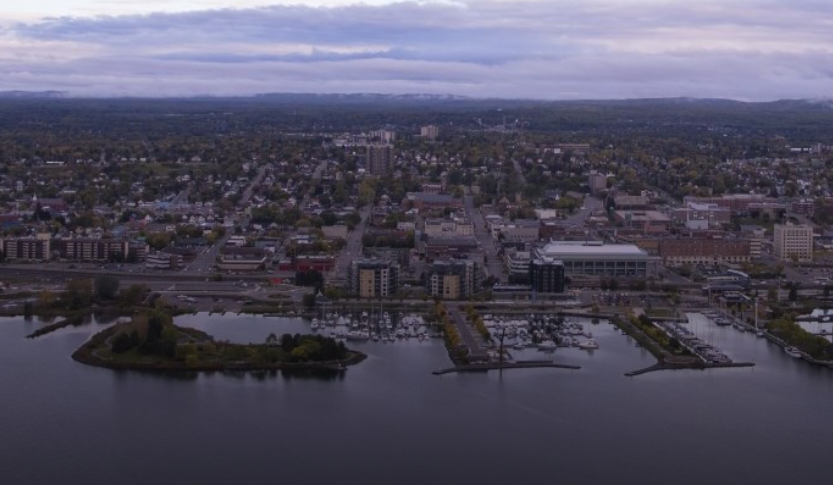THUNDER BAY – Thunder Bay’s city council has put its seal of approval on a new zoning bylaw expected to accelerate urban infill.
The overhaul of the city’s land-use guidelines has received largely positive public feedback, with the Chamber of Commerce and EcoSuperior among groups welcoming the changes at a public meeting in March.
The support hasn’t been universal, with some residents worrying the ability to build backyard units could impinge on their own property through shading or drainage issues, for example, or simply by “changing the character” of single-family neighbourhoods.
The reduction in parking requirements from 1.5 spaces per residential unit to a single space also drew some concerns.
In the end, however, the new bylaw earned unanimous approval from councillors won over by the potential upsides of opening up new affordable rental units and driving urban infill.
Coun. Rebecca Johnson called the changes "long overdue," saying public concerns could be ironed out.
“I want the community to know that issues were raised [at the public meeting] and they have been addressed," she said. "Have they been addressed to everybody’s 100 per cent satisfaction? Probably not. But I feel really comfortable with moving this whole bylaw forward and the fact that the [outstanding] issues will be addressed… and amendments can be made to this.”
A host of smaller changes are intended to simplify zoning classification for residential and commercial areas, and make the bylaw itself easier for the public to navigate.
The changes respond in part to new provincial guidance requiring cities offer more options for additional units.
The new bylaw collapses the current four residential zones into one “urban low rise zone,” with standardized rules allowing between one and three additional units per lot in all urban areas, including through additions and smaller “backyard homes.”
Lots with 10 metres of frontage and an area of 300 square metres will be permitted up to two units; lots with 15 metres frontage and 450 square metres of area up to three units; and lots with 20 metres of frontage and 600 square metres of area up to four units, a number currently allowed only on corner lots.
Just how impactful those changes are will depend on how much public uptake there is. Manager of planning services Leslie McEachern said there are promising signs the expanded options for additional units will prove appealing to meet the needs of student renters and seniors who want assistance to age in place in their homes.
“It’s really difficult to tell” just what the uptake will be, she said. “We’re hearing a lot about housing shortages [and] the cost of a home. Certainly having the ability to add an additional unit could help individuals who are looking to make payments on their home a little bit more affordable.”
“Over the years, we’ve had lots of applications from individuals looking to do that, so I do see there being quite a bit of uptake on people adding that extra unit.”
The option to add new rental units in existing homes will prove more popular than building secondary “backyard homes,” she expects, at least at first.
“The backyard homes, I think there will be less uptake on that initially,” she said. “On an already developed site, there may be some constraints to add[ing] that additional backyard home. I see it more being something we might see moving forward as new construction happens, where someone can plan for it, service it as part of the overall development of their site.”
The ability to add backyard homes on existing lots could depend on factors like the existing scale of development on-site, lot coverage, servicing of the site, and even the presence of overhead wires, she said.
Few major changes were made to the zoning bylaw since it was presented at the March 22 public meeting.
At the request of the Thunder Bay Field Naturalists, the city did adjust the zoning applied to the William Bog, identified as a provincially significant wetland, to clarify development in the surrounding area would require an amendment to the zoning bylaw, said McEachern.
Adjusted the zone that applies to it to make it clearer that it’s an area under environmental protection, any development in or around it would require amendment to zoning bylaw
After its approval Monday, the zoning bylaw will enter a 20-day appeal period, during which parties that commented on the bylaw throughout the public process could launch an appeal.
“At this point, we’re hopeful we don’t receive an appeal,” said McEachern. “We’ve had a really collaborative public engagement [process] and [were] able to work out a lot of kinks along the way. I think we’re bringing forward a bylaw that meets largely what the community’s supporting – I mean, there’s always an outlier or two who’s not happy about a particular regulation or change in direction. But I think overall, generally, we’ve received really positive feedback on the new bylaw.”
Development applications already in process are grandfathered in under the previous zoning bylaw’s provisions for a period of three years.
